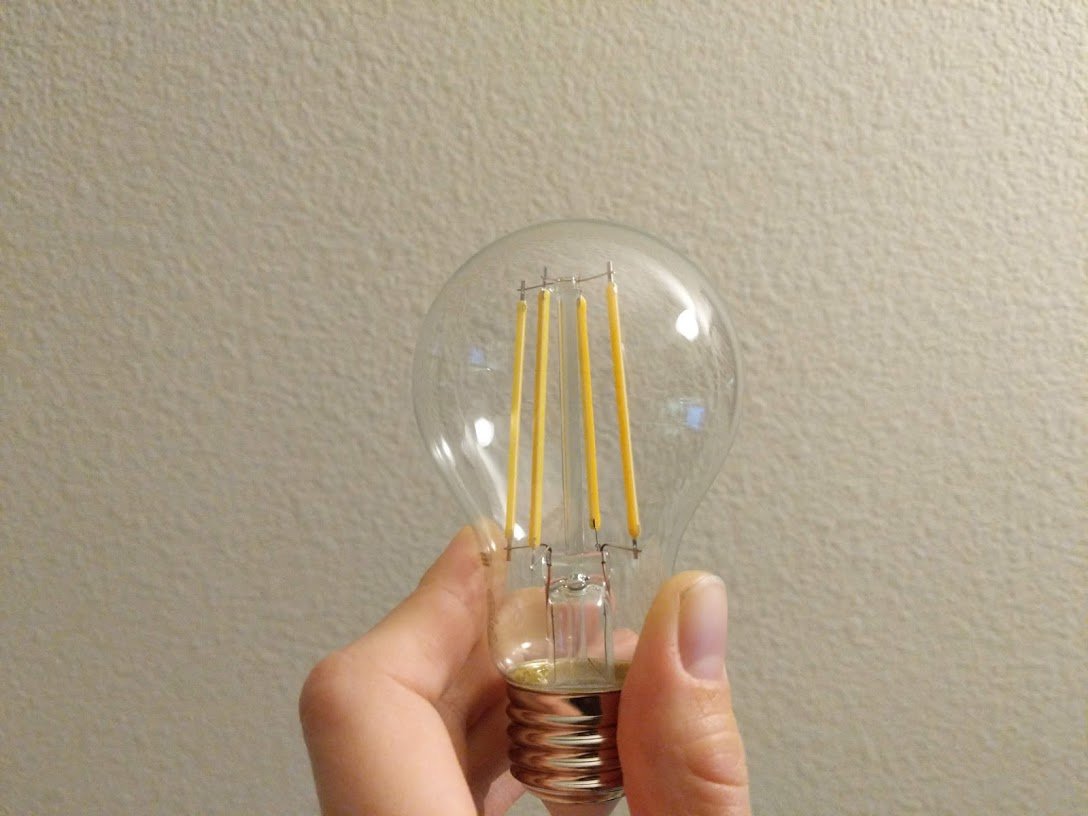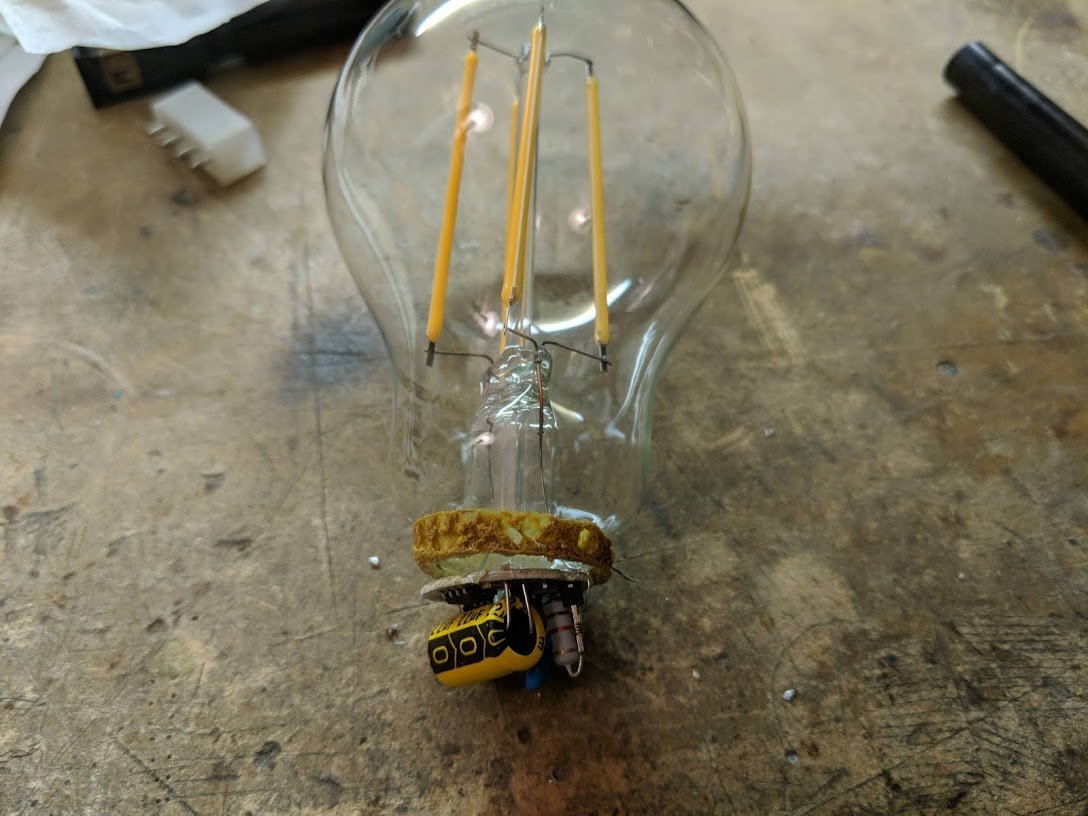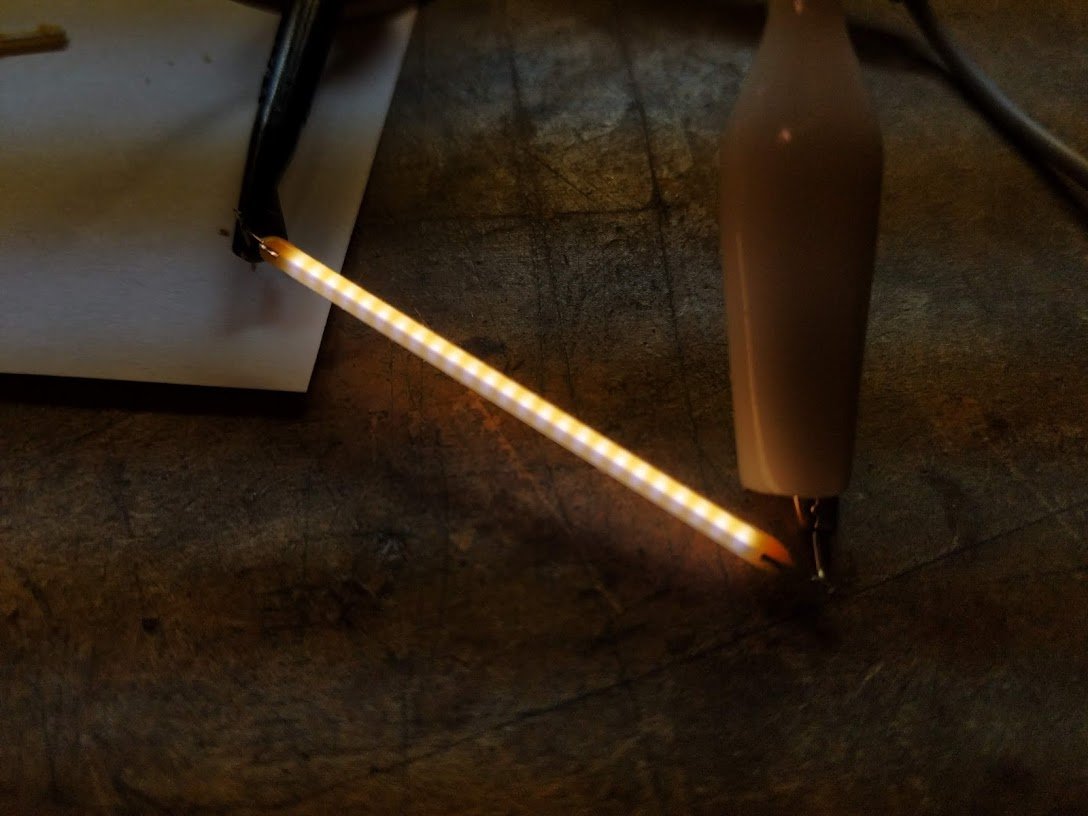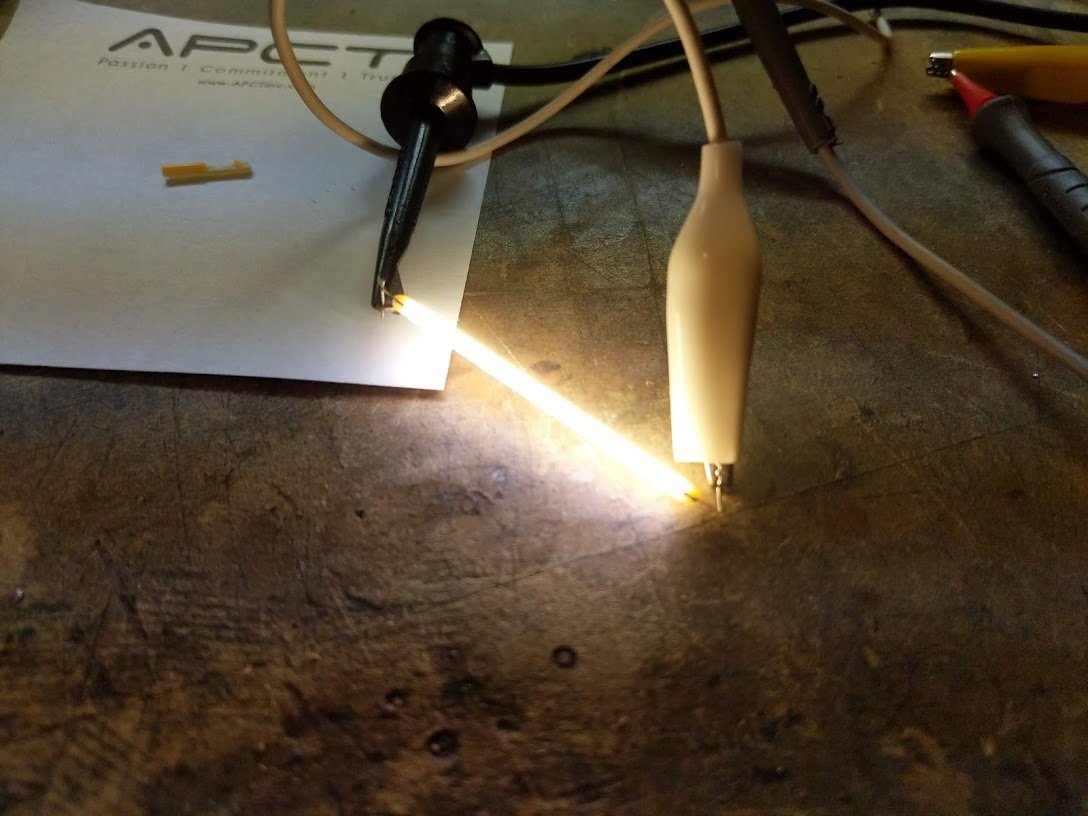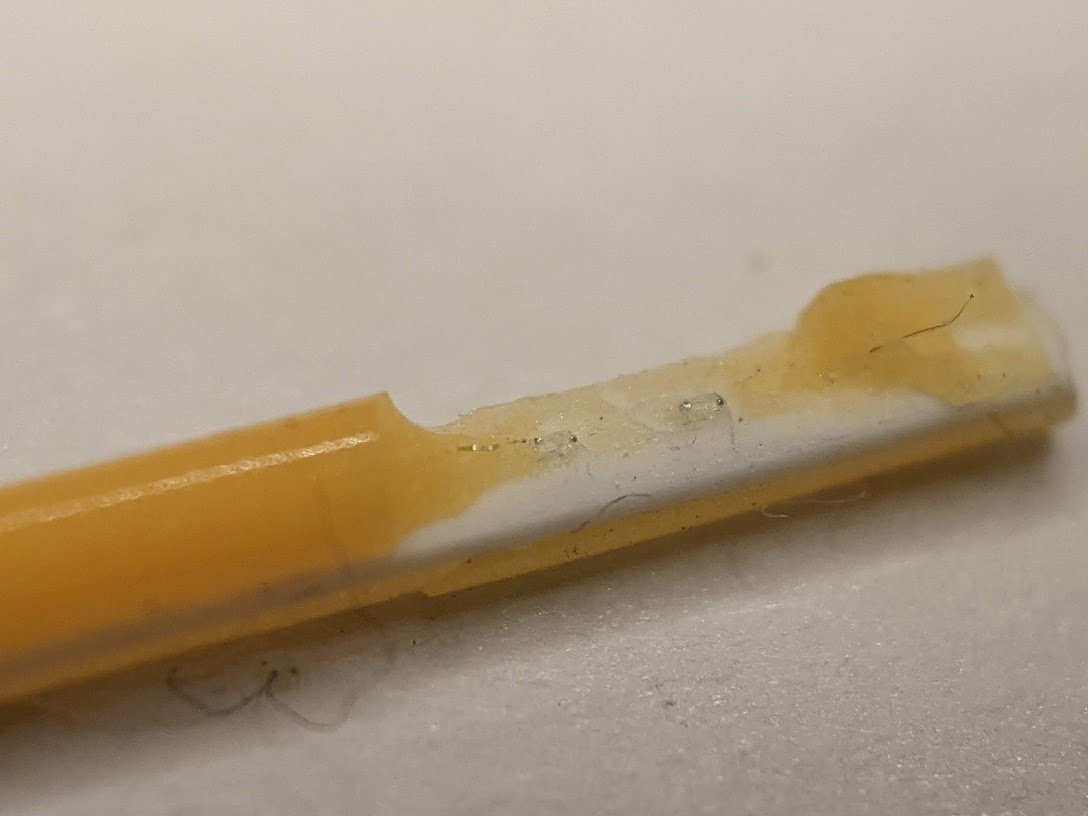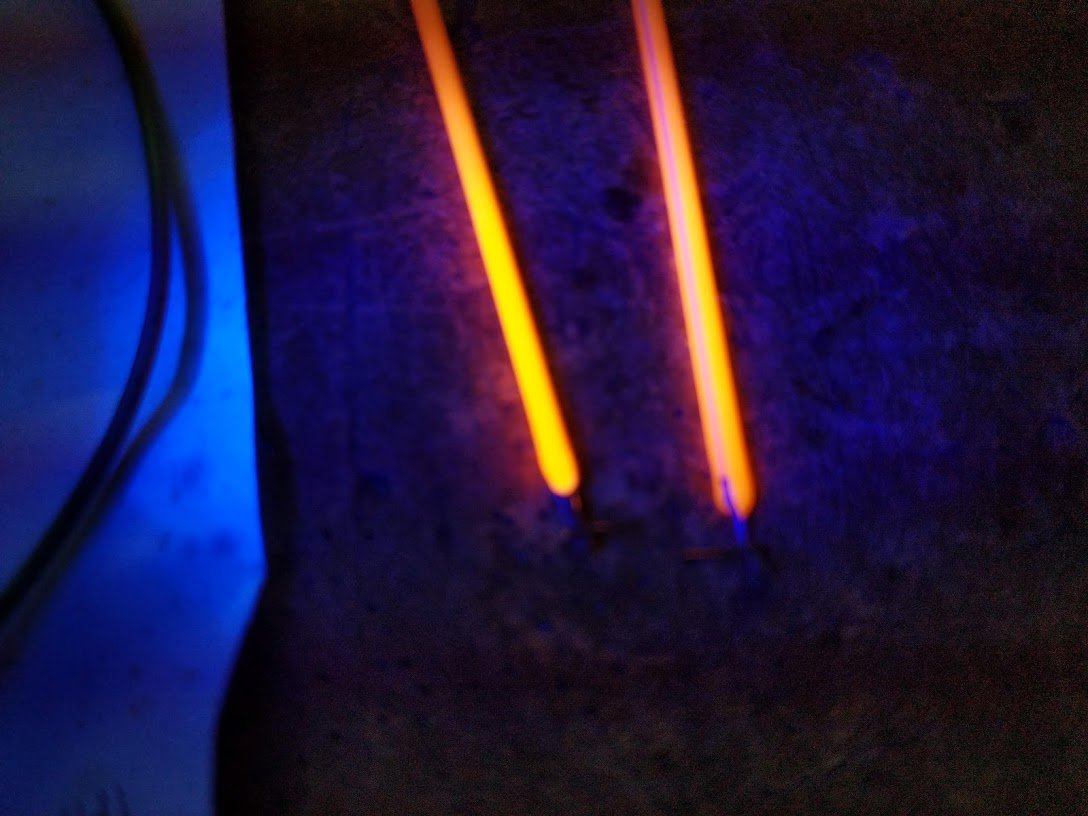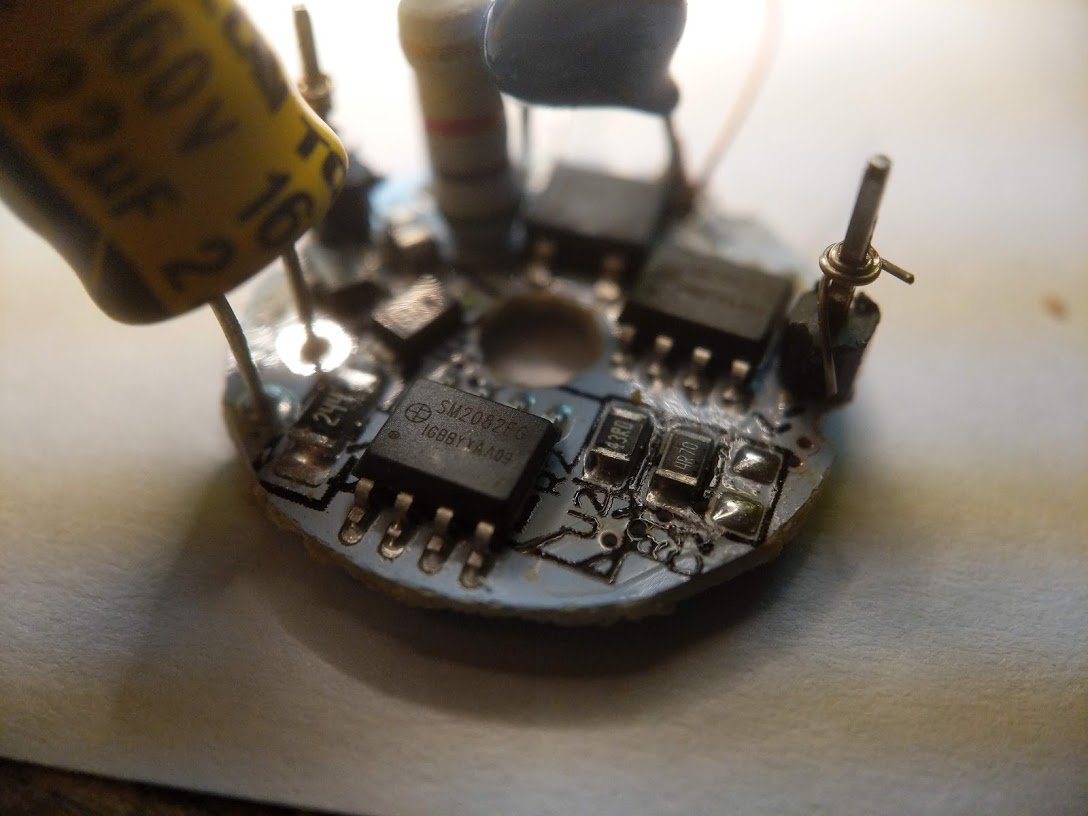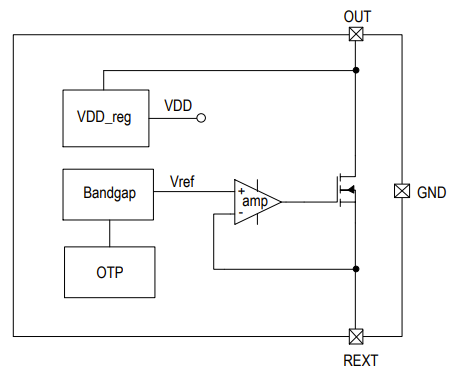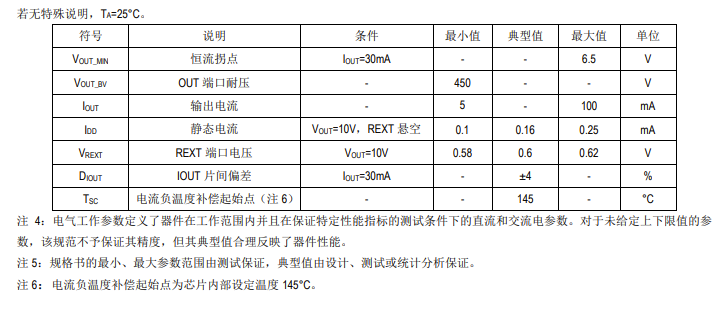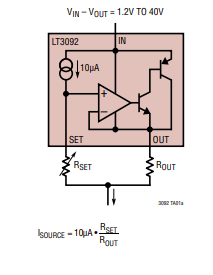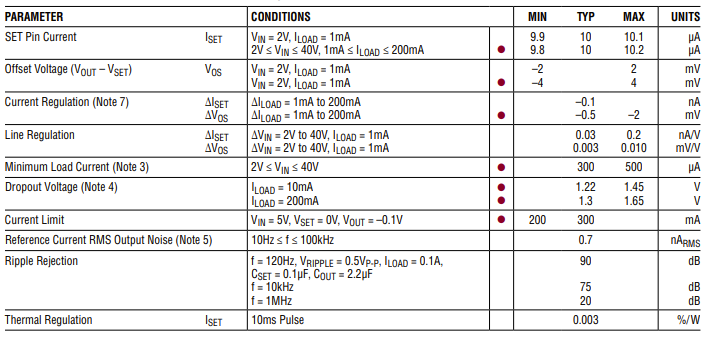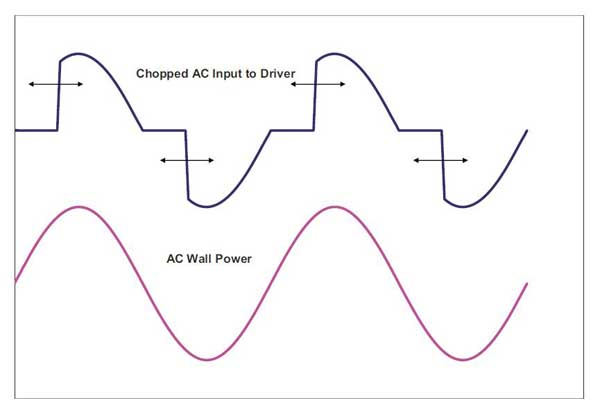OK, wow, that bulb made a loud pop when i cracked it open with the help of concrete and a screwdriver.
i've clipped out an individual umm light stick? light saber?
this is at 50 microamps of current and around 60V (with a 1K current limiting resistor, of course). you can see 25 individual points of light.
this is at 50 microamps of current and around 60V (with a 1K current limiting resistor, of course). you can see 25 individual points of light.
but i want to take it apart further. you can't get an LED die this long!
all right here we go. there's a train of tiny blue LEDs glued to a ceramic strip each tied to the next with a thin aluminum bond wire. the outer covering seems to be silicone mixed in with a phosphor.
the phosphor in the silicone fluoresces when exposed to UV light. reminds me a bit of a CRT phosphor but i'm sure the chemistry is different.
now let's look at the circuit board. it's got a bridge rectifier, some off-brand capacitors, a fusible resistor, and two chips. SM2082. hmm.
ahh it's a constant current LED driver chip. LCSC has them in stock, naturally. they appear to be less than 5 cents each in quantity! https://lcsc.com/product-detail/LED-Drivers_Shenzhen-Sunmoon-Micro-SM2082EGS_C241848.html
that's incredible! the SOIC package alone costs something like 2 cents. maybe they've figured out how to get them even cheaper.
here's the typical circuit from the datasheet. basically the external resistor sets the current. it's linear, so the chip just dissipates the power drop across it. a switching converter would be more efficient, but the current is so low it probably doesn't matter.
pretty classic current sink circuit. i guess the OTP is for trimming the bandgap. there's probably some test mode that lets them clock in digital data to the OTP cells.
wow, they actually have some guaranteed test limits! about all i recognize is 小 (small) and 大 (big) but i haven't put any effort into learning Chinese. for the rest, there's Google Translate.
naturally, there's an equivalent part from a US chip company, the LT3092. it's not really a fair comparison.
and yeah the specs are way more thorough and quite a bit tighter. you'd use the US part for some sort of precision instrumentation, never for a high volume consumer product.
anyway someone asked about dimming LED lamps. it can be tricky if the lamp uses a switching supply. but with a linear it's not bad. most dimmers use triacs and chop the AC waveform like this.
with this bulb, the chopped waveform gets turned into pulsating DC by the bridge rectifier and then RC filtered into a DC voltage that is kind of related to the dimmer setting
i haven't backed out the circuit but my guess is they're feeding a little sample of the DC voltage into the current set pin of the linear regulator.

 Read on Twitter
Read on Twitter